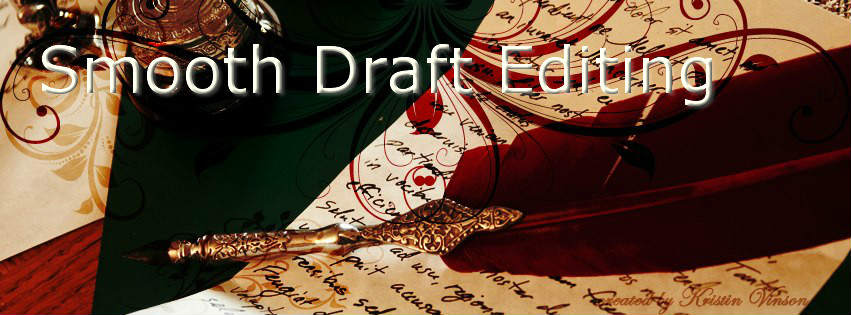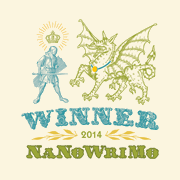Revising the #NaNo Novel Workshop (8 Weeks to Transform & Polish Your Draft)
It’s mid-December. By now, NaNoWriMos fall into several categories:
- You haven’t looked at your story since November 30.
- You’ve been tearing your hair out since December 1 and you still aren’t happy with the story after multiple rounds of revisions.
- You started reading it again and gave up after a few pages or chapters because you think it’s awful.
- You don’t have a clue what to do with it now.
- You already revised your story and sent it off to at least one publisher or agent, or have self-published it.
- You haven’t finished your story yet.
No matter which category you find yourself, you will discover plenty of tips, tricks, and solid advice to help you revise and polish your NaNo story. (Even if you are in #5 and already have a contract, you can still benefit from what I’m going to share with you, because most publishers nowadays don’t cover the layers of story, they just massage your words).
The 8-week NaNo Revision Workshop begins on January 1 2015 (if you’re especially motivated, you have the option of getting the first lesson early!)
We’re not only going to polish your writing, we’ll improve your storytelling, by tackling your draft element by element, from the ground up, including structure, plot, characters, dialog, setting, subtext, word choices and more. You’ll also be to ask questions and receive feedback on your specific issues. This workshop is interactive.
Haven’t finished your NaNo novel yet?
That’s okay. If you work your way through the steps, you’ll find plenty of techniques to get you back on track or to give you new encouragement to keep writing.
First off, I’m going to let you in on a secret. I love sharing secrets because when I first started writing, I didn’t have a clue that everyone—even multi-published authors—struggle with the exact same problems I had.
My secret: I’m not a perfect writer, even after years of writing and of editing other writers’ work. In fact, it’s because I’m not perfect that I have developed a lot of strategies to work with what I’ve written, hoping to turn it into what I hoped it would be when I first started thinking about the story.
Which leads me to today’s true confession: I absolutely hate revising my work. Hate it with a passion I can’t put into words. It makes me get sweaty and dry-mouthed to think about reading the whole novel I just wrote and trying to shape into something good enough to publish. I’d rather vacuum, clean the toilet, or run stadiums than tackle the seemingly overwhelming task of fixing everything I know is wrong after the first draft.
But I also love the results of revision and you will too.
It’s so satisfying to finish revising and know without a doubt the book is so much better after you take some time to really clean it up.
No matter how good the first draft is—and there are many writers who end up with really solid first drafts—the second draft is always better.
That means you can improve what you already have with a 100 percent guarantee, just by giving it even one revision pass.
It’s a myth that really good writers or experienced writers get it right the first time around, or even the second time around. Even someone who spent a year on their first draft and not just 30 days, is going to want and need some revision. And if you only spent 30 days on it, you’re definitely going to need a revision.
Stephen King has been writing for forty years and he doesn’t get it right in his first draft!
There’s a bit of magic that happens between draft one and two that doesn’t happen any other time.
 All the while you’re writing the first draft, especially during NaNo when you’re trying to get your word count goals, you don’t know exactly how and where the story is going. You don’t know precisely who your characters are and what drives them or what they love and fear and hate.
All the while you’re writing the first draft, especially during NaNo when you’re trying to get your word count goals, you don’t know exactly how and where the story is going. You don’t know precisely who your characters are and what drives them or what they love and fear and hate.
Even if you outlined within an inch of your life, the finished product is going to have some unexpected elements.
It’s only when you go back to the beginning, now with an absolute knowledge of where everything is leading, that you can objectively determine which story and plot elements work, which don’t work, and begin to correct or improve both. And that’s where the magic lies.
Once you know how it ends, you can choose better how to get there.
Suppose you’re taking a road trip from Los Angeles to New York. It’s a long journey and you have many options to get there. Are you going to take Hwy 10 to 80 on a route through Wyoming and Colorado, or the southern route through New Mexico, Texas, and Missouri? Where will you spend each night, and which sights will you stop to see along the way? Will you zip right through, or meander? When you write a novel, you literally have this many choices and possibilities to get from page 1 to the end.
Once you’ve already driven from LA to NY, the next time you take that journey, you’ve got some experience. You may take the same route, and now you know not to stay at the Motel 6 in Amarillo, but to keep driving until you get into Oklahoma. You may decide to make a detour to a site or restaurant you missed the first time around or didn’t have time for, or arrived when it was closed.
You not only have your original experience, you can judge whether or not you made the best choices the first time around, and you can revise to incorporate things you didn’t even know until it was too late. Maybe your story would be better if the key supporting character wasn’t the MC’s sister, but his college roommate’s sister because that would allow you a little bit of a love triangle. Maybe you’ll expand a particular scene, or tighten it up. You may realize that you need to sprinkle in some foreshadowing earlier, or pare back some information you revealed too soon. Or perhaps your MC really needs to be from a different state, background, etc., to make the story work even better.
That’s the fun part of revising.
 You get to rewrite history the way you want (and need) it. The original story is not set in stone. It’s a living, breathing thing you can nurture and groom and train to do what you want it to do. It’s no longer a wild animal taking you on a runaway ride across the prairie while you hold on for dear life until you type THE END–which is how NaNoWriMo can feel, even for an experienced writer.
You get to rewrite history the way you want (and need) it. The original story is not set in stone. It’s a living, breathing thing you can nurture and groom and train to do what you want it to do. It’s no longer a wild animal taking you on a runaway ride across the prairie while you hold on for dear life until you type THE END–which is how NaNoWriMo can feel, even for an experienced writer.
Hopefully, you are totally psyched up for the revision process. In the first lesson, we’ll examine the difference between rewriting a story and editing a story. We’re going to take a long hard look at your novel, like a rough stone to polish into a glittering gem. It won’t be all fun and games, but you are guaranteed to learn a lot about writing as you rewrite this time around.
How to Sign Up
The Workshop begins January 1, 2015 and runs for 8 weeks. (Late sign-ups will start with Lesson One and continue for 8 weeks from sign-up date.)
Registration Fee:
$197 for 8 weeks
$97 if you sign up by December 31, 2014
Limited to 30 students per session to make sure you get the attention you deserve.
Money-back guarantee: Cancel your Workshop registration at any time and receive a refund for the remaining weeks.
[wp_eStore_fancy1 id=24]
If you have any difficulty using the cart or registering for this course, please email em@smoothdraft.com for assistance.
[wp_eStore_cart_when_not_empty]
EM Lynley is a multi-published author of 15 novels and two dozen shorter works of fiction as well as How to Be a NaNoWriMo Winner. Her 2013 NaNo Novel Bound for Trouble was published by Dreamspinner Press and her 2014 NaNo Novel One Marine, Hero will be published Summer 2015. She also runs Smooth Draft Editing, offering a range of services from proofreading to developmental editing and coaching for writers. Contact her at em@smoothdraft.com


No Comments
Trackbacks/Pingbacks